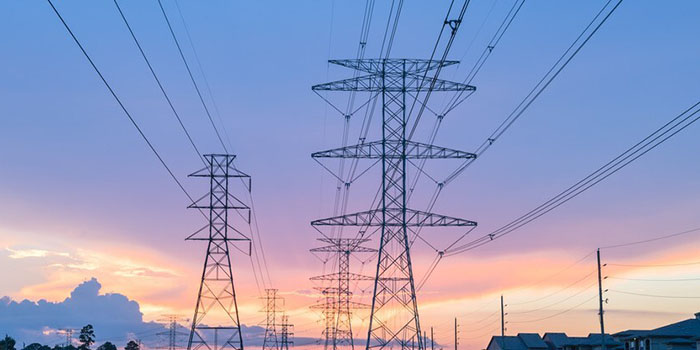
Overhead power lines (also known as transmission lines, power lines, power cables, and coaxial cables) are groups of suspended cables and wires used to transport electrical power between two or more separate locations so it can be processed for use by consumers safely and efficiently.
Table of Contents
What is an overhead power line?
An overhead power line operates as a channel to transfer electromagnetic waves of varying voltage levels across a variety of distances, environments, and landscapes to supply electrical power where it is needed.
Power line cables are structurally supported by utility poles or steel towers, which are designed to keep the lines suspended at a safe height. This ensures that there is a sufficient amount of ground clearance – minimizing the risk of the live lines being disturbed or damaged.
Overhead power lines come in different types and lengths to accommodate varying voltage loads. This enables them to serve the entire spectrum of industrial and residential electrical supply purposes.
How does an electrical power transmission system work?
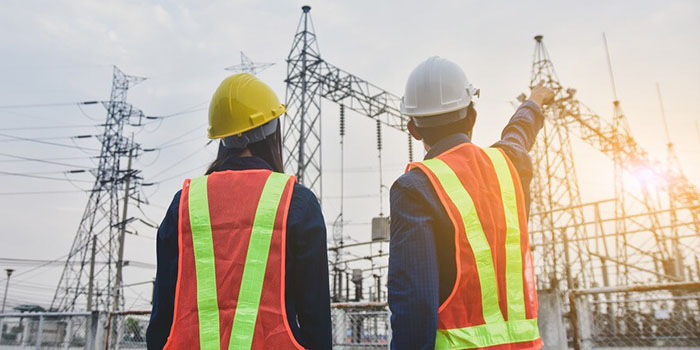
The electrical power transmission system of overhead lines enables electricity to be moved nationwide – creating a seamless, speedy power supply across all corners of a country. The network is vital in ensuring a reliable and regular supply of power to our homes, workplaces, and other amenities.
Overhead power lines are of two types: transmission lines and distribution lines. Transmission lines carry high-voltage ‘primary’ power between generators and substations, where it can be later safely “stepped down” to a lower voltage level using a transformer before being distributed publicly.
Distribution lines are the cables that then carry this decreased ‘secondary’ electricity supply to individuals, businesses, and other premises for everyday use.
Types of power lines
Power lines can use two forms of current flow: alternating current (AC) and direct current (DC). With direct current, the electrical current flows in only one direction, whilst with alternating current, the power can periodically change direction.
Due to its superior ability to work with higher voltages and the ease with which the power can be transformed as required, AC current is most commonly used in power lines today.
For ease of assessing performance, AC power lines can be classified according to voltage and length:
Voltage Classification
- Low Voltage: Lines transmitting 1 kV or less;
- Medium Voltage: Lines transmitting between 1-69kV;
- High Voltage: Lines transmitting between 69 kV – 345V;
- Extra-High Voltage: Lines transmitting around 345-800kV; and
- Ultra-High Voltage: Lines transmitting 800 kV and over.
Length Classification
Short Lines
Short power lines are those which cover a distance up to 50 miles (80 km). These lines carry a voltage flow of between 11-33 Kv and are often used to supply electricity to homes and other low-demand power networks.
Medium Lines
Lines spanning between 50-100 miles (80-160km) are classified as medium power lines and usually transmit between 66-132 Kv through its cables. This category can be further sub-divided into Pi-Models and T- Models. In a Pi-Model line, the capacitance (ability to store an electrical charge) is concentrated equally at each end, whereas in a T-Model line the capacitance is concentrated at its center.
Long Lines
A long power line covers a distance of 100+ miles (over 160km) with a voltage capacity of 132 Kv or above. Only in these lines are all four parameters used for determining performance (resistance, inductance, capacitance, and leakage conductance) equally distributed across the entire power line.
Components of overhead power lines
Line Supports
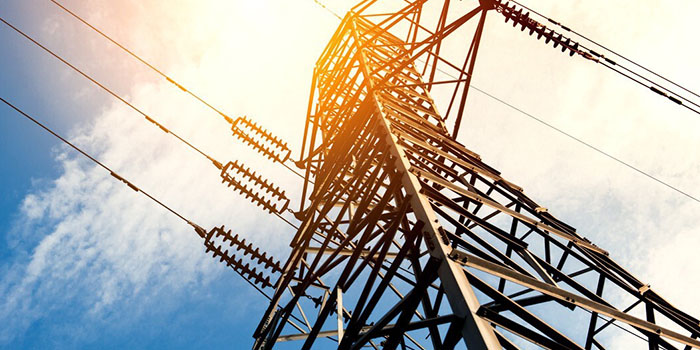
Line supports keep power lines suspended above the ground, minimizing the safety risk and maximizing their power transmission. There are 2 main types of line supports – poles and towers. The type used will depend on various factors, such as the voltage level and distance coverage required.
Poles
Poles transport power over shorter distances. Commonly used for distribution lines, they usually carry low-high voltage levels. The most common pole materials are wood, concrete, and steel.
Wooden Poles: Often used to cover shorter distance spans, wooden poles are a cost-effective option for transporting low-medium voltage levels. However, as a natural material, wooden poles have a shorter life span and are considerably more vulnerable to environmental conditions than their man-made counterparts.
Concrete (RCC) Poles: Low maintenance with a superior loading capacity, concrete poles are a prime choice for supporting structures requiring an extra boost of strength or resilience, such as areas hosting extreme climatic conditions. Unfortunately, their weightier construction also makes them expensive and awkward to transport.
Steel Poles: Commonly used in urban areas, steel poles are durable and allow for a high level of flexibility in their manufacture – making them an attractive option adaptable to a range of transmission purposes. Though galvanized poles boast good longevity, they can still fall foul to rusting and are costly.
Towers
For the transmission of higher voltage levels across larger areas, steel towers are the go-to line supports. As mighty steel constructions with a considerable level of mechanical strength, their design offers robust resilience to the elements and a higher quality of transmission.
However, as with steel poles, towers are expensive and more vulnerable to lightning strikes than other materials.
Power Line Conductors
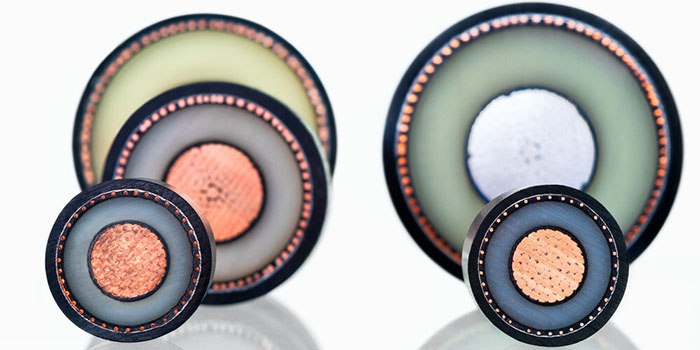
Conductors are components attached to power lines to promote the passage of electricity from one location to another. They also help to boost the safety of the electrical network.
The four main types of conductors used on overhead lines are AACs (All Aluminium Conductors); AAACs (All Aluminium Alloy Conductors); ACARs (Alloy Reinforced Aluminium Conductors), and ACSRs (Steel Reinforced Aluminium Conductors).
ACSR conductors – and to a lesser degree, AAACs – are the most frequently used conductors on modern power lines. As lightweight conductors with high capacitance ACSRs and AACs are also cost-effective – making them ideal for use in high voltage lines requiring multiple or bundled conductors.
Power Line Insulators
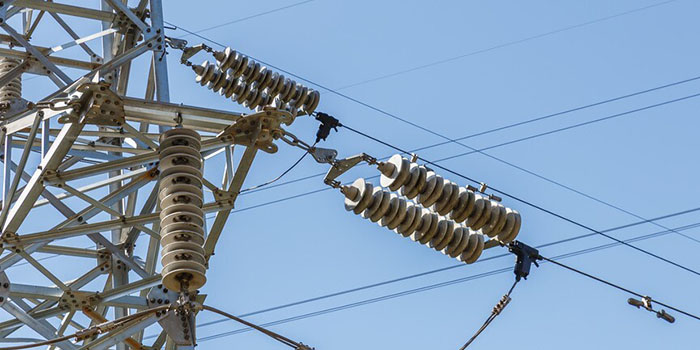
Insulators restrict the power flow at defined points of an electrical network. They are used on power lines to assist in the safety and support of the structure by reinforcing the line and keeping the conductors separated.
Power line insulators can be loosely split into two categories depending on the installation process: pin insulators (installed above the line) and suspension insulators (installed to hang below the line).
For higher-voltage lines, modular (multiple units) suspension insulators are often used to handle the higher level of resistance required. Made from a series of adjustable insulator disks, they can be easily increased or decreased as needed.
Power Line Earth Anchors
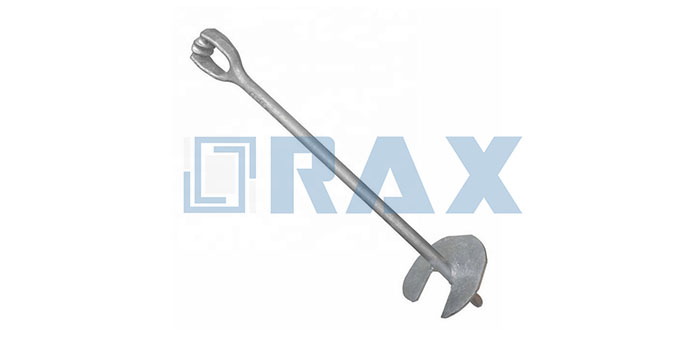
Earth anchors (also known as ground anchors) are heavy-duty engineering devices used to reinforce and stabilize the poles or towers installed to support power lines.
Driven or corkscrewed into the surrounding foundations, earth anchors help to protect the structural integrity of the lines against adverse or extreme weather conditions, as well as any subsequent natural or man-made changes to the local landscape.
Power Line Fittings
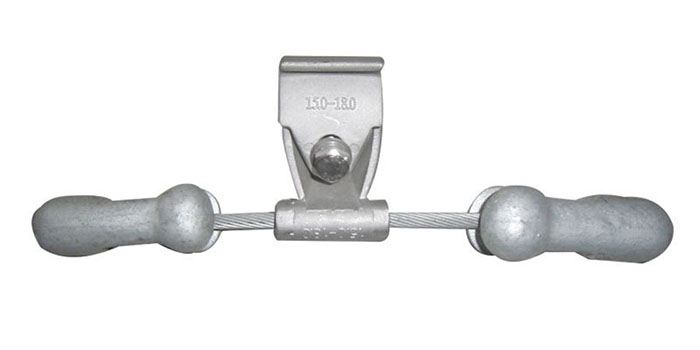
A variety of hardware accessories are fixed to power lines, poles, and towers to assist in the smooth transition of electricity from one place to another. Some of the most common fittings used on power lines and supports include:
- Cross arms: A bar attached horizontally to a pole to support its insulators and other hardware;
- Guy wires: Strong steel cables that reinforce the structure of a utility pole;
- Spacers: Components that keep live conductors on a line a safe distance apart;
- Dampers: Devices that protect fragile cables and wires in an outdoor environment;
- Earth Wires: Provide a layer of shielding between the line and harsh climatic conditions;
- Lightning Arrestors: Safety devices that redirect lightning away from the live line into the ground.
Conclusion
When genius pioneer Nikola Tesla designed the AC system during the Industrial Revolution, perhaps even his visionary mind could not have predicted the unrivaled impact his discovery would have in reinventing how this powerful energy could be utilized.
Nearly 150 years on, AC current remains the undisputed worldwide standard for electrical transmission – and, thanks to our state-of-the-art network of overhead lines which carry this radiant resource far and wide, we have been able to achieve a level of technological advancement which has enriched all areas of our lives.
Thanks to the development of long-distance power transmission, our humble planet Earth has been illuminated within the vast expanse of inky space – and our future looks brighter still.
Frequently Asked Questions (FAQs)
What is an overhead power line?
An overhead power line operates as a channel to transfer electromagnetic waves of varying voltage levels across a variety of distances, environments, and landscapes to supply electrical power where it is needed.
How does an electrical power transmission system work?
The electrical power transmission system of overhead lines enables electricity to be moved nationwide – creating a seamless, speedy power supply across all corners of a country. The network is vital in ensuring a reliable and regular supply of power to our homes, workplaces, and other amenities.
Types of transmission lines
Power lines can use two forms of current flow: alternating current (AC) and direct current (DC).
AC power lines can be classified according to voltage and length:
Voltage Classification
- Low Voltage
- Medium Voltage
- High Voltage
- Extra-High Voltage
- Ultra-High Voltage
Length Classification
- Short Lines
- Medium Lines
- Long Lines
Components of overhead power lines
The Components can be classified into five main categories:
- Line Supports
- Power Line Conductors
- Power Line Insulators
- Power Line Earth Anchors
- Power Line Fittings